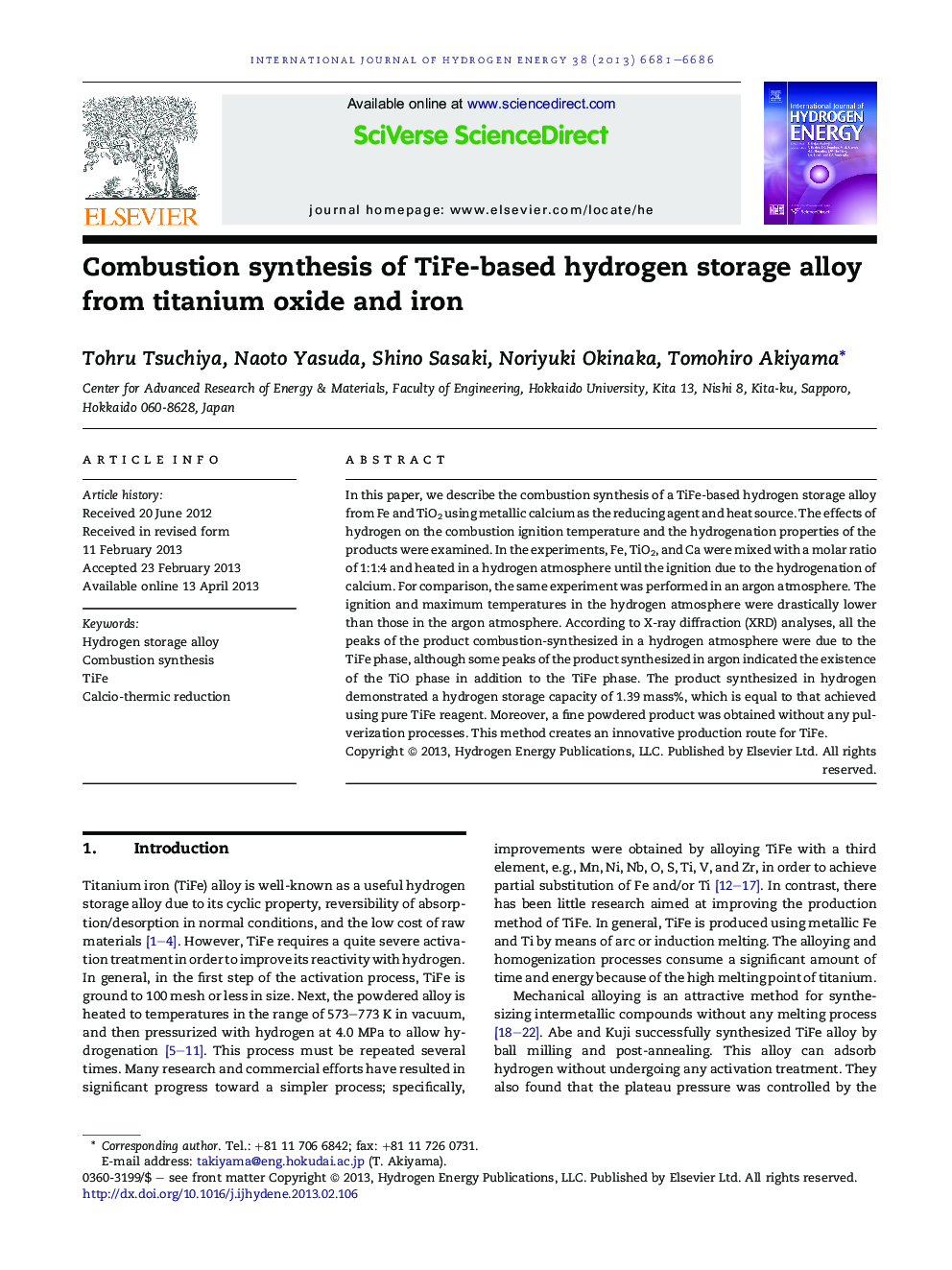| Article ID | Journal | Published Year | Pages | File Type |
|---|---|---|---|---|
| 1281588 | International Journal of Hydrogen Energy | 2013 | 6 Pages |
•Combustion synthesis of TiFe from Fe, TiO2 and Ca in argon and hydrogen atmosphere.•Trigger reaction was different at reaction atmosphere.•Pure TiFe fine powder was available by CS in hydrogen atmosphere.•Hydrogen storage capacity was as high as reagent TiFe.
In this paper, we describe the combustion synthesis of a TiFe-based hydrogen storage alloy from Fe and TiO2 using metallic calcium as the reducing agent and heat source. The effects of hydrogen on the combustion ignition temperature and the hydrogenation properties of the products were examined. In the experiments, Fe, TiO2, and Ca were mixed with a molar ratio of 1:1:4 and heated in a hydrogen atmosphere until the ignition due to the hydrogenation of calcium. For comparison, the same experiment was performed in an argon atmosphere. The ignition and maximum temperatures in the hydrogen atmosphere were drastically lower than those in the argon atmosphere. According to X-ray diffraction (XRD) analyses, all the peaks of the product combustion-synthesized in a hydrogen atmosphere were due to the TiFe phase, although some peaks of the product synthesized in argon indicated the existence of the TiO phase in addition to the TiFe phase. The product synthesized in hydrogen demonstrated a hydrogen storage capacity of 1.39 mass%, which is equal to that achieved using pure TiFe reagent. Moreover, a fine powdered product was obtained without any pulverization processes. This method creates an innovative production route for TiFe.
